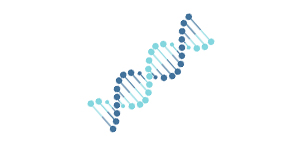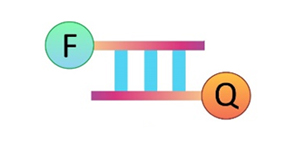Sensitivity
High sensitivity and broad dynamic range using the E. coli resDNA Quantitative Kit (qPCR) (Cat. No.
OPA-O002). (A) Typical analysis results obtained with Standard 1 (300 pg/μL) to 6 (3 fg/μL). (B) The standard curve of the 10-fold dilution series. PCR efficiency should be 90-110%.

Specificity
Assay specificity. Standard curves generated using 10-fold serial dilution of E. coli genomic DNA (included in the kit).

Consistent
Consistent quantitation across a broad range of fragment sizes. Standard curves were generated using a 10-fold serial dilution of gDNA and fragmented DNA. Fragmented DNA was generated by sonicating total E. coli genomic DNA (8min, 13min, 20min). Fragmentation of the DNA was confirmed by agarose gel analysis.

Bioactivity
Add 90 μL of the working RNase Substrate solution to each 96-well plate, and add 10 μL of RNase A standards (0-200pg/mL*10μL / well = 0-2pg/well), incubate the plate in the fluorometer (BMG CLARIOstar) collecting real-time data at 1minute intervals for 30 minutes at 37°C using the settings described in this section. The RNase Activity Assay can be evaluated in rigorous kinetic terms using real-time data and the sensitivity can reach 0.03125pg.
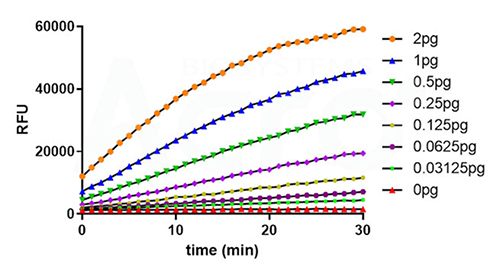
Intra/Inter-Assay Statistics
Eight replicates of each of seven samples containing different concentrations of RNase were tested in one assay, the Intra-Assay and inter-Assay Precision CV are both<10%.
Intra-Assay Statistics

Intra-Assay Statistics

Stability
The probe is freeze-thawed 3 times, the kit performance meets the requirements, the sensitivity is not reduced, and the CV< 10%.
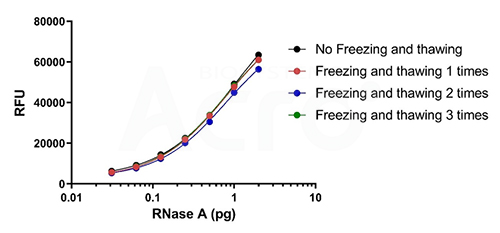
Interference effect
DNase Activity Assay Kit (Fluorescence) (Cat. No.
ASE-A002) and RNase Activity Assay Kit (Fluorescence) (Cat. No.
ASE-A001) were used to detect nuclease residues in the same sample. No significant cross-reactivity or interference was observed.

Typical Data
For each experiment, a standard curve needs to be set for each micro-plate, and the specific OD value may vary depending on different laboratories, testers, or equipments. The following example data is for reference only.
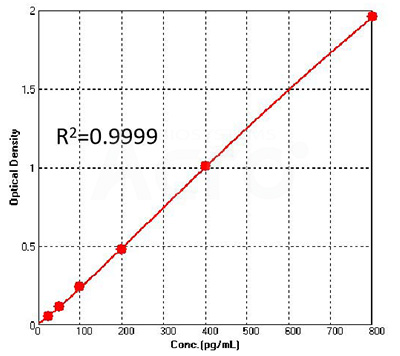



































 Limited Edition Golden Llama is here! Check out how you can get one.
Limited Edition Golden Llama is here! Check out how you can get one.  Limited Edition Golden Llama is here! Check out how you can get one.
Limited Edition Golden Llama is here! Check out how you can get one.  Offering SPR-BLI Services - Proteins provided for free!
Offering SPR-BLI Services - Proteins provided for free!  Get your ComboX free sample to test now!
Get your ComboX free sample to test now! Time Limited Offer: Welcome Gift for New Customers !
Time Limited Offer: Welcome Gift for New Customers !  Shipping Price Reduction for EU Regions
Shipping Price Reduction for EU Regions

















